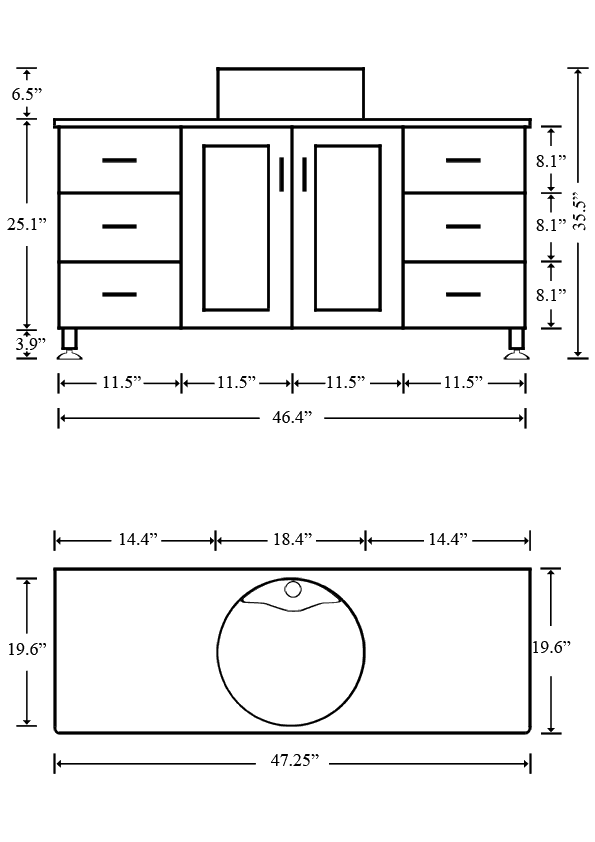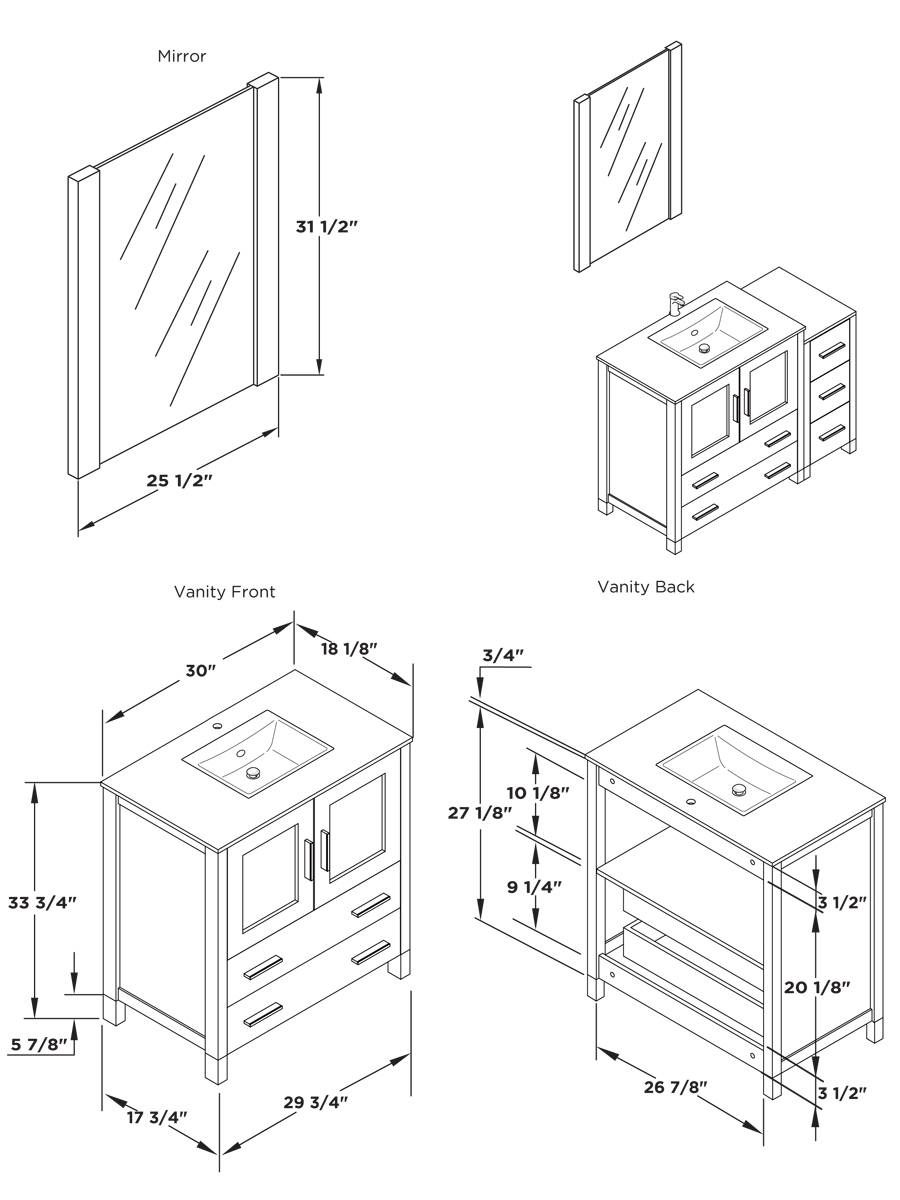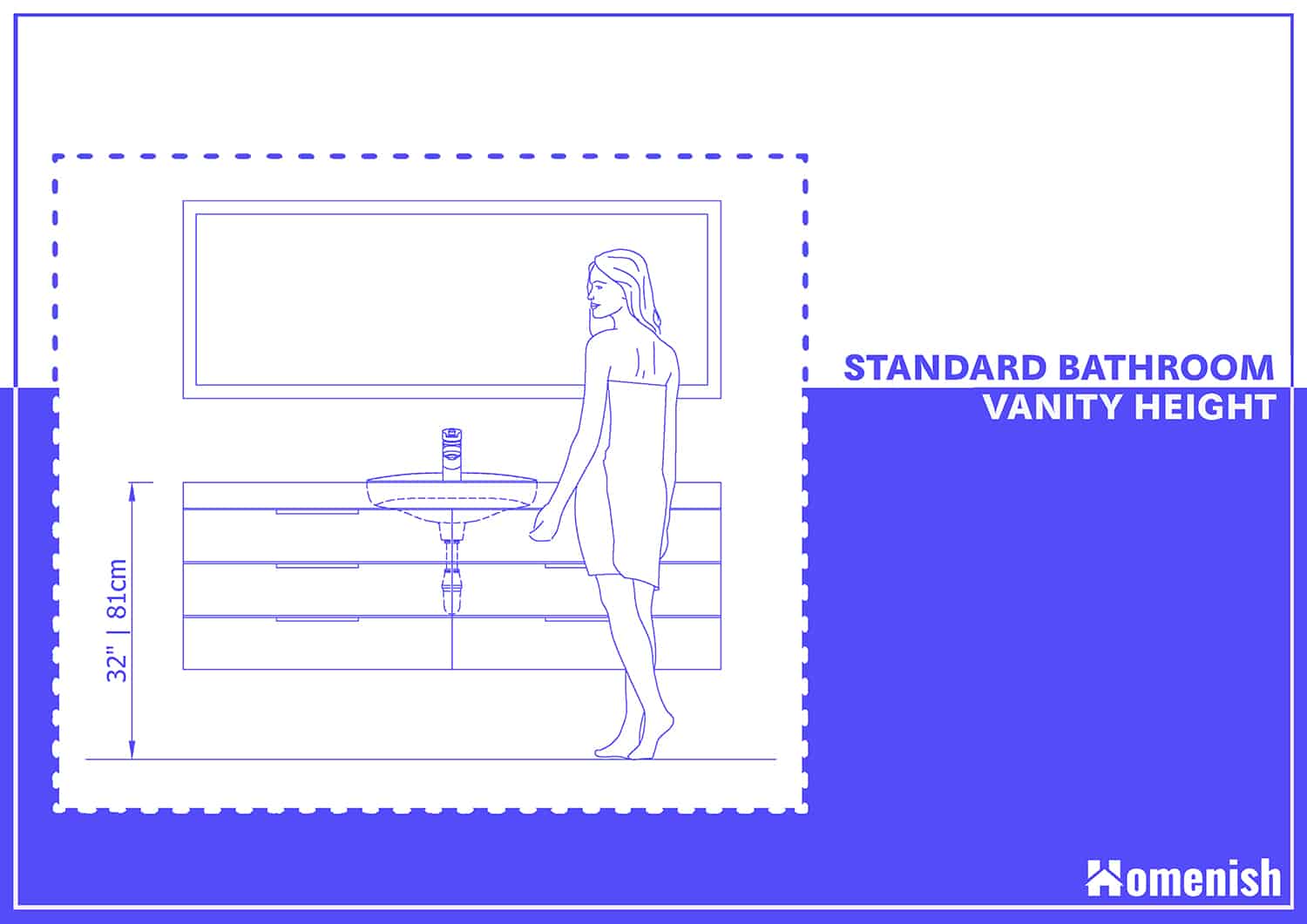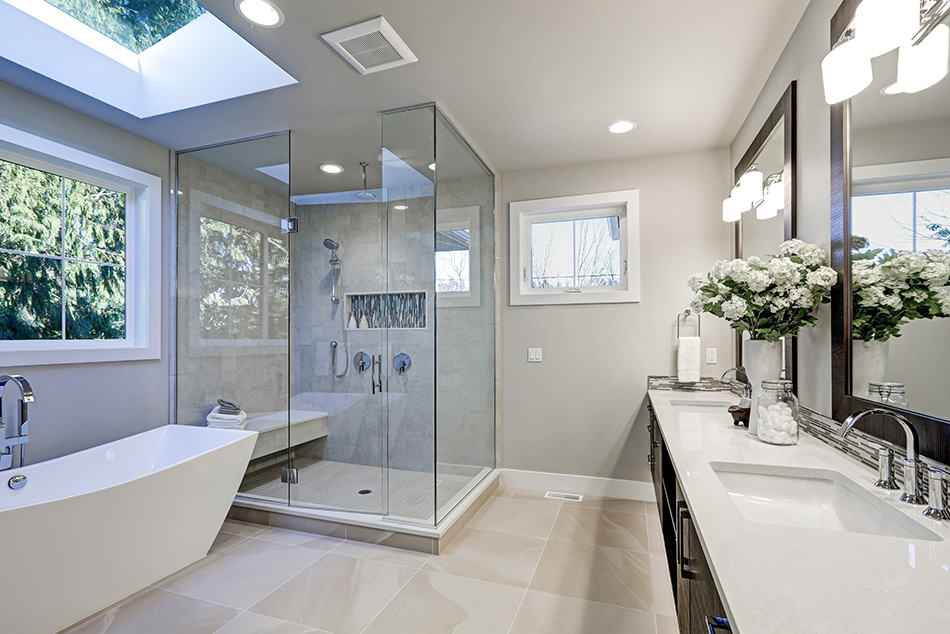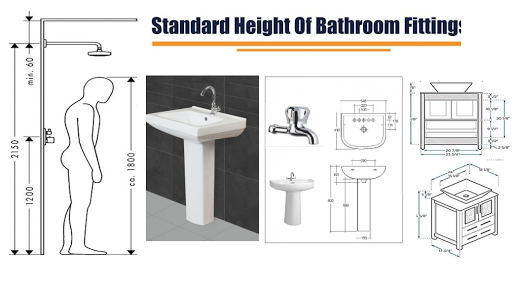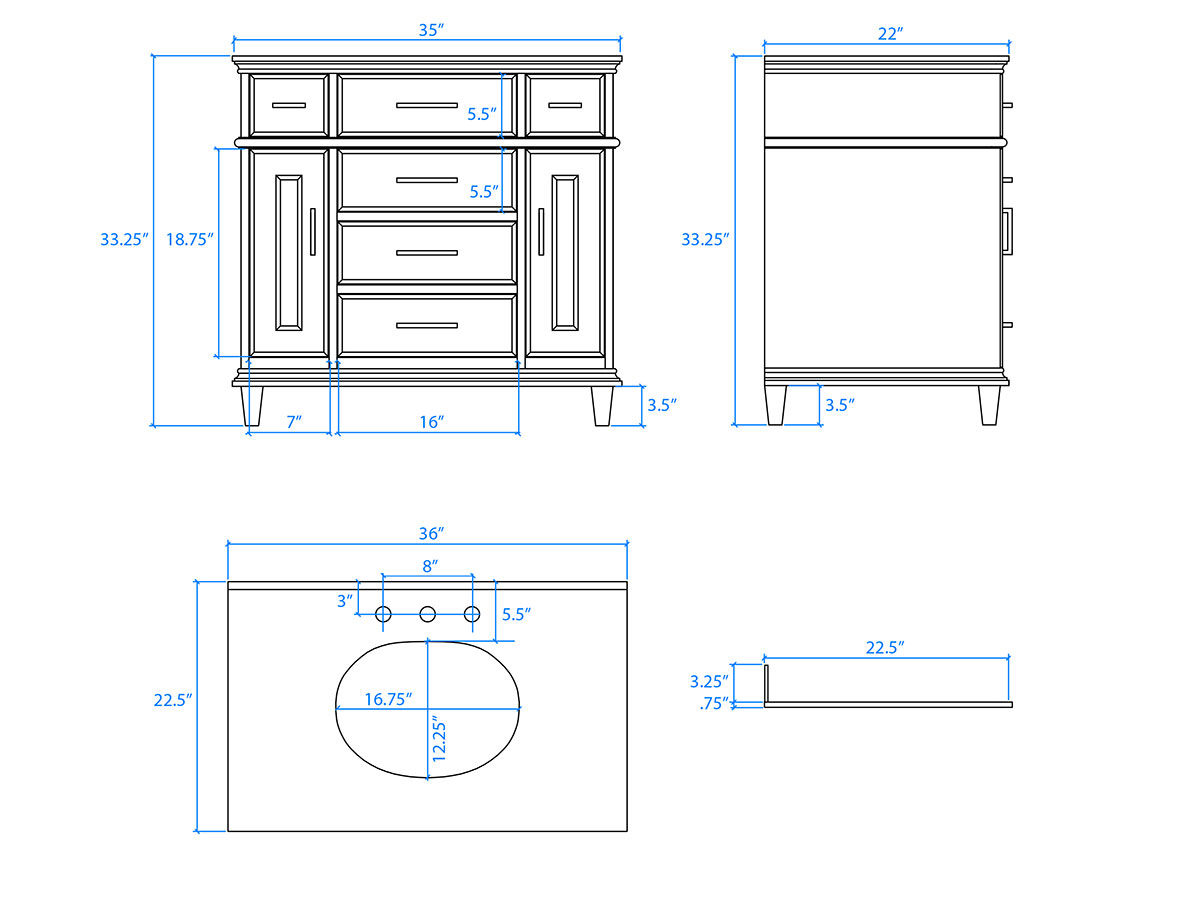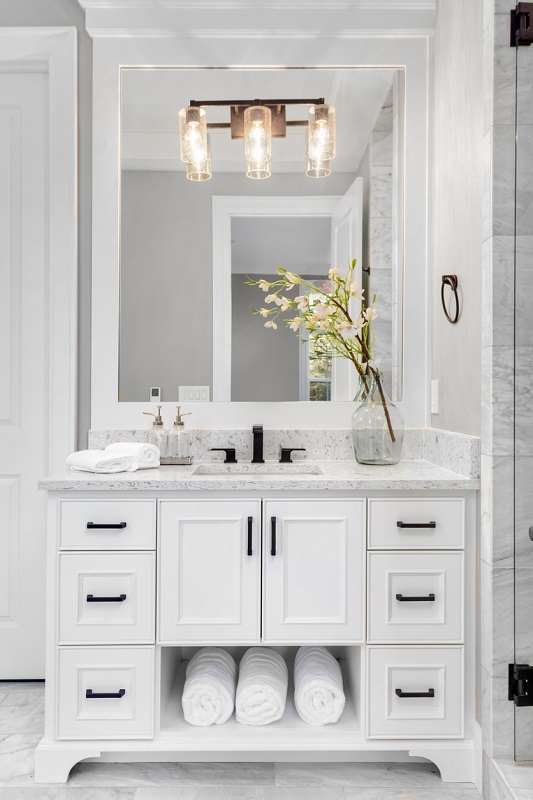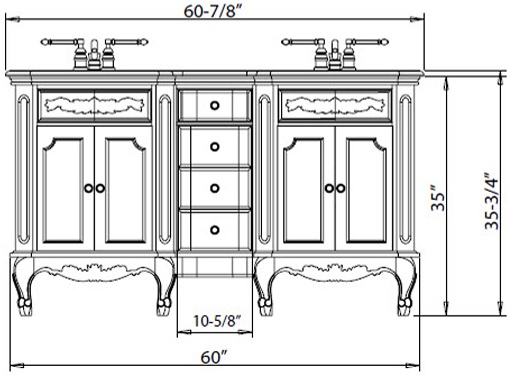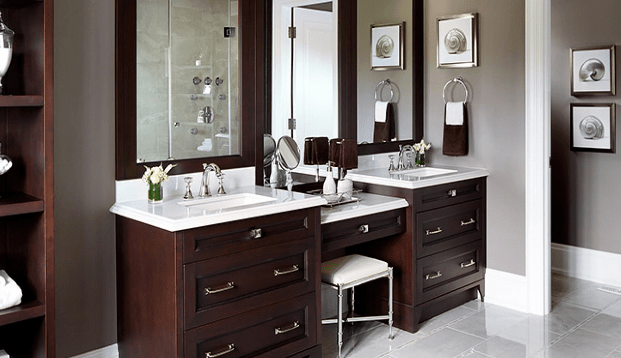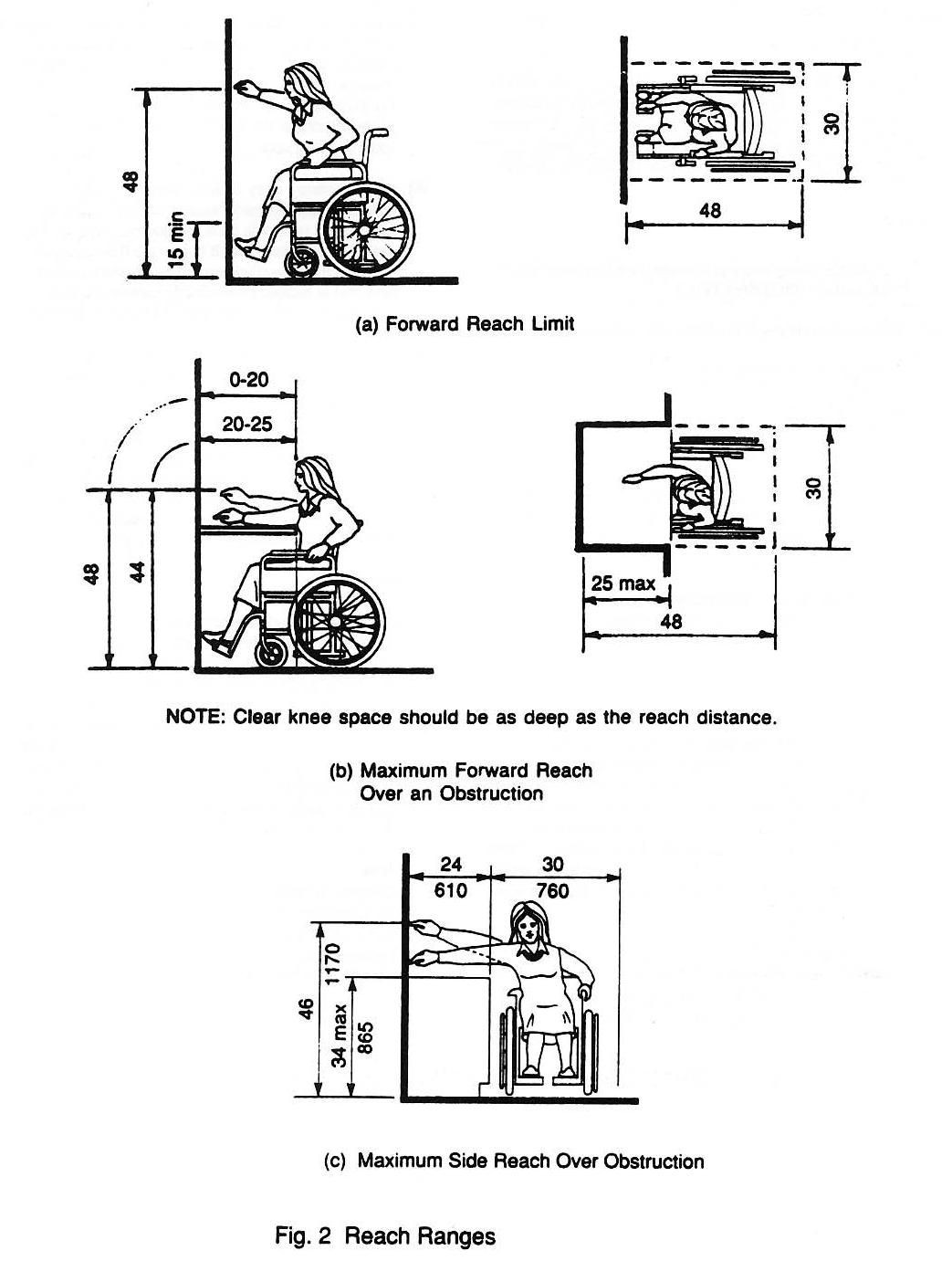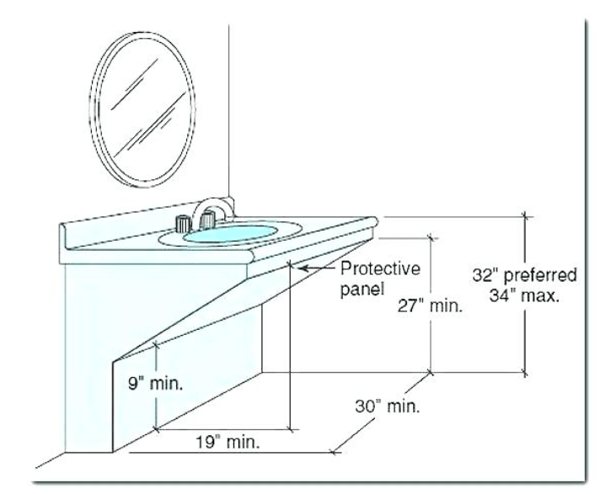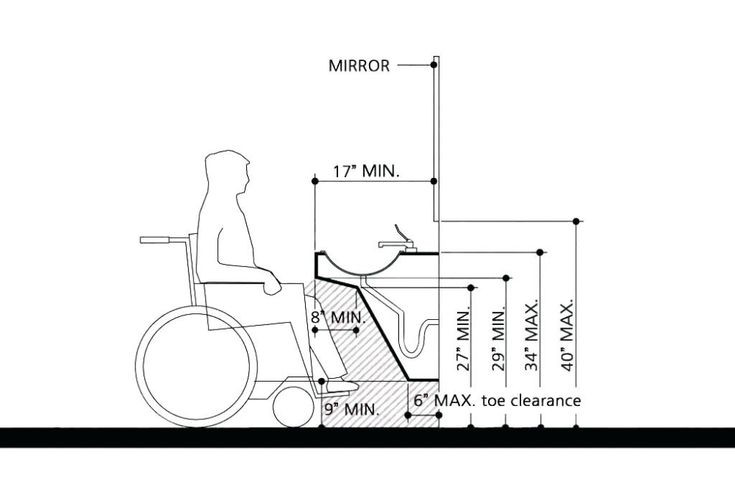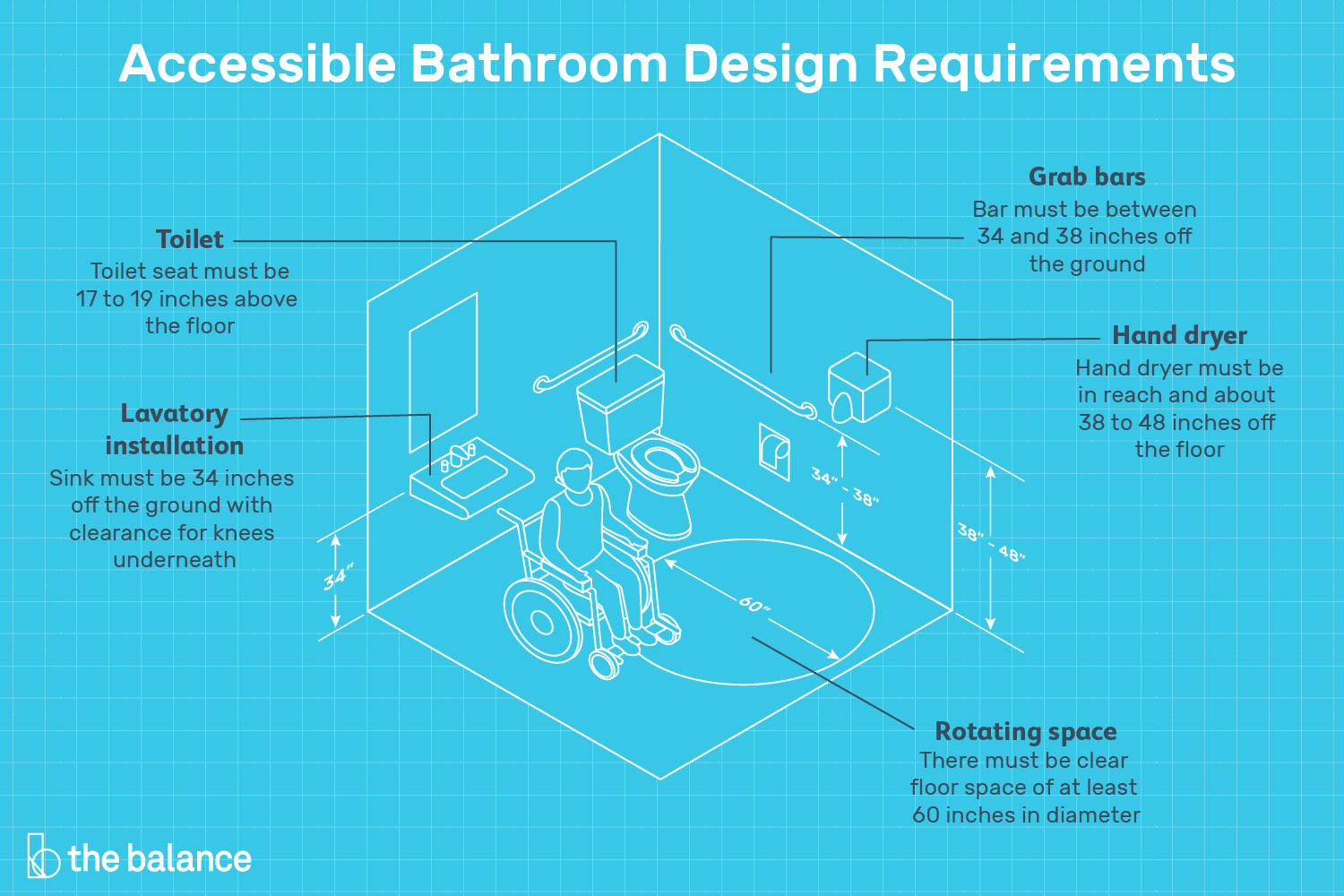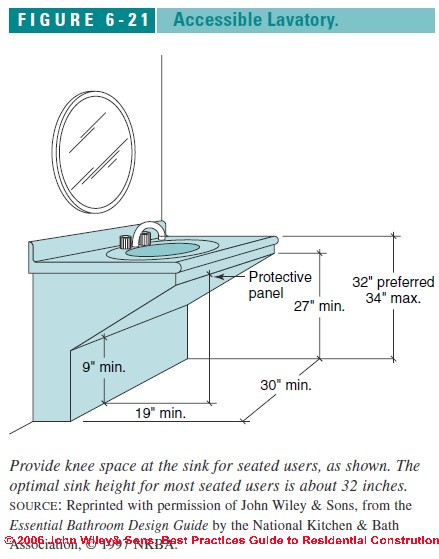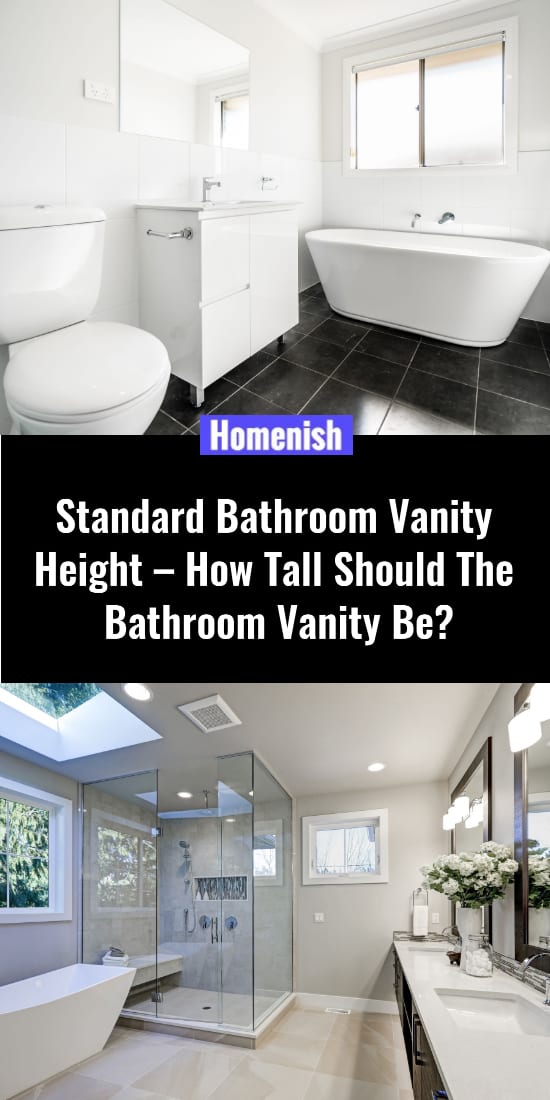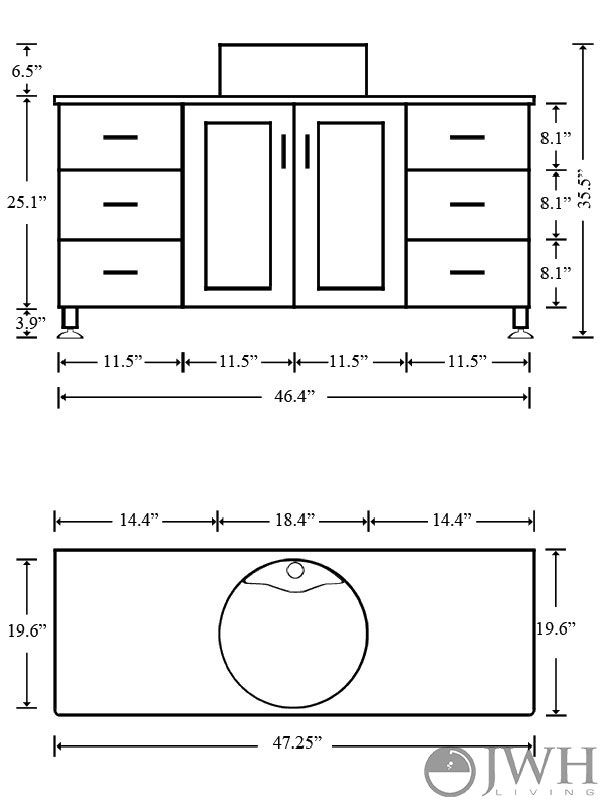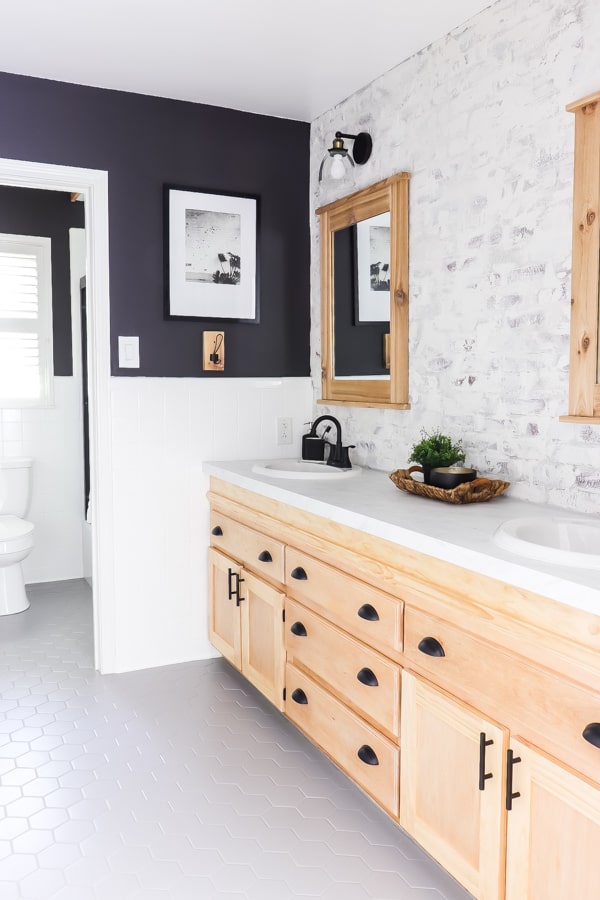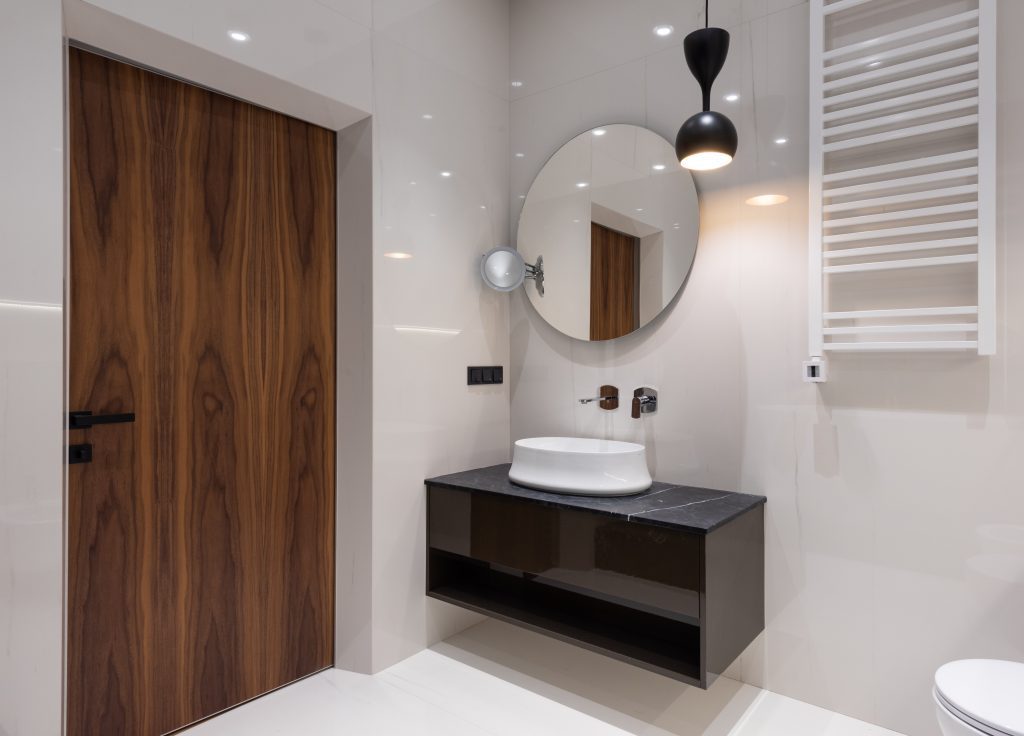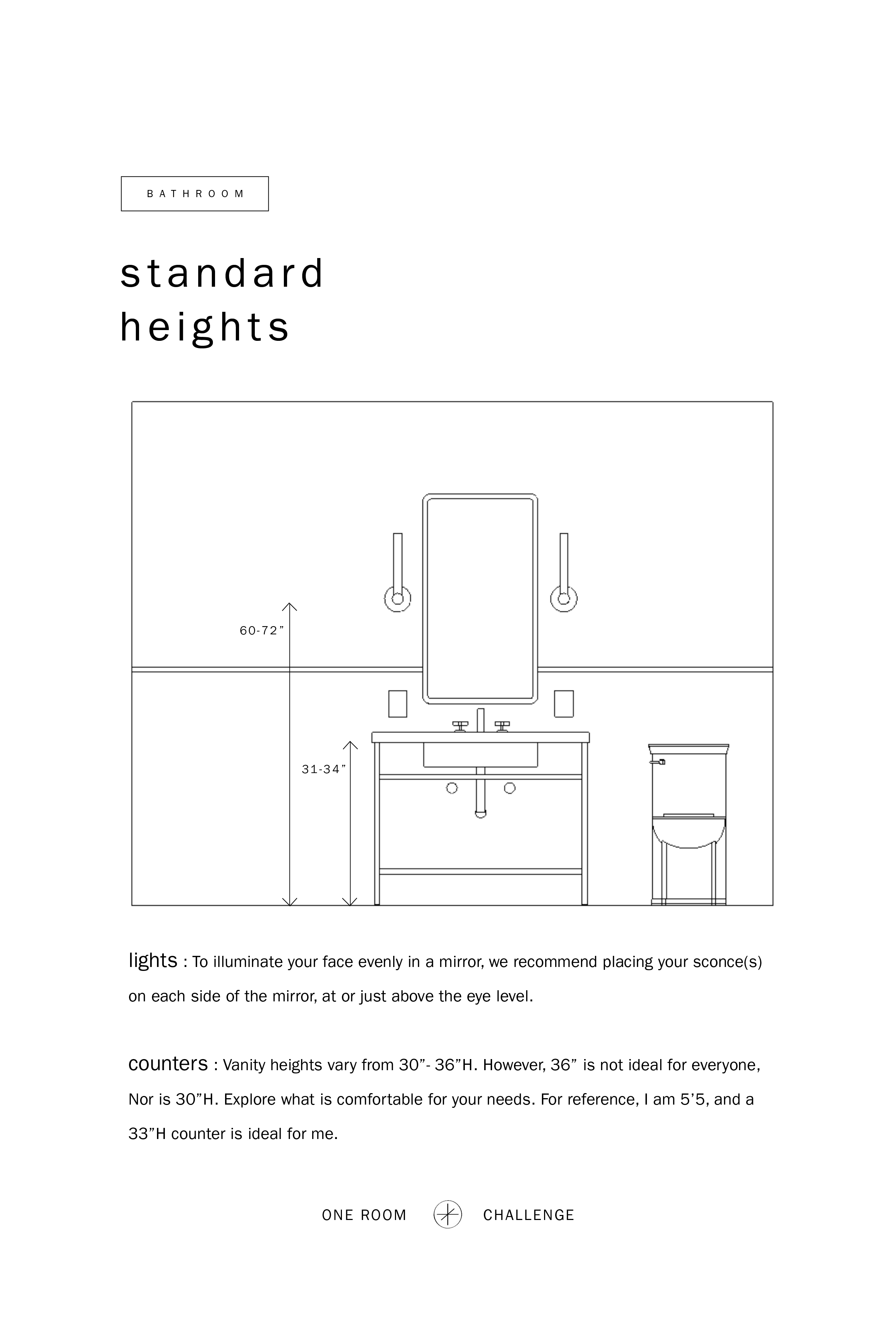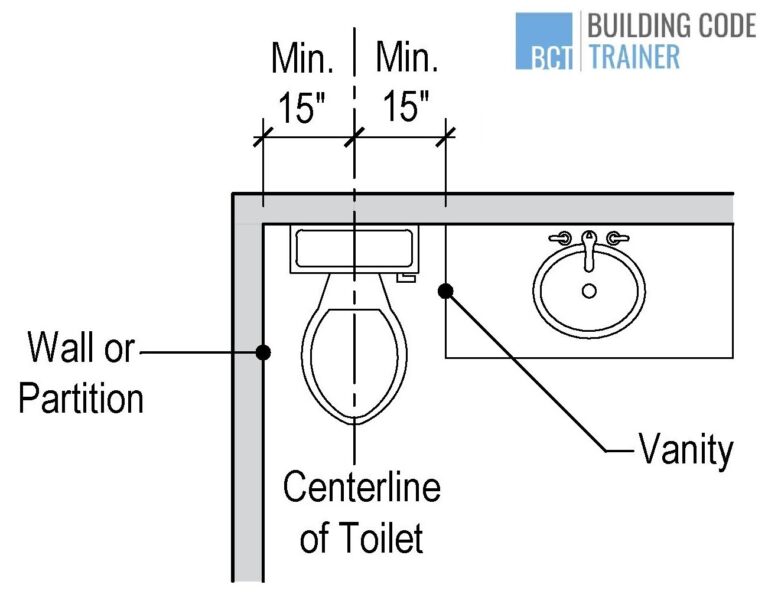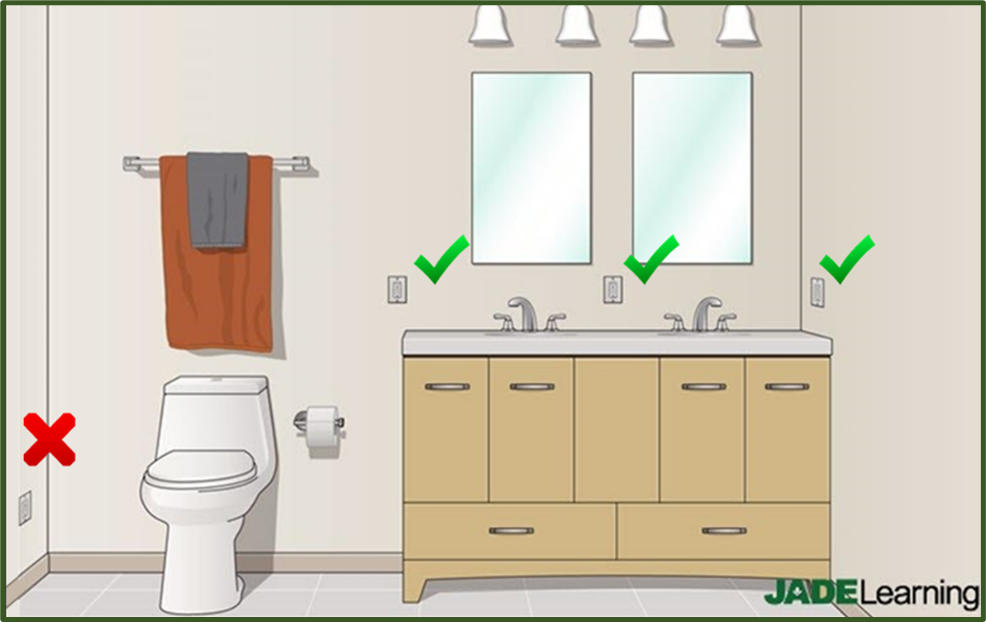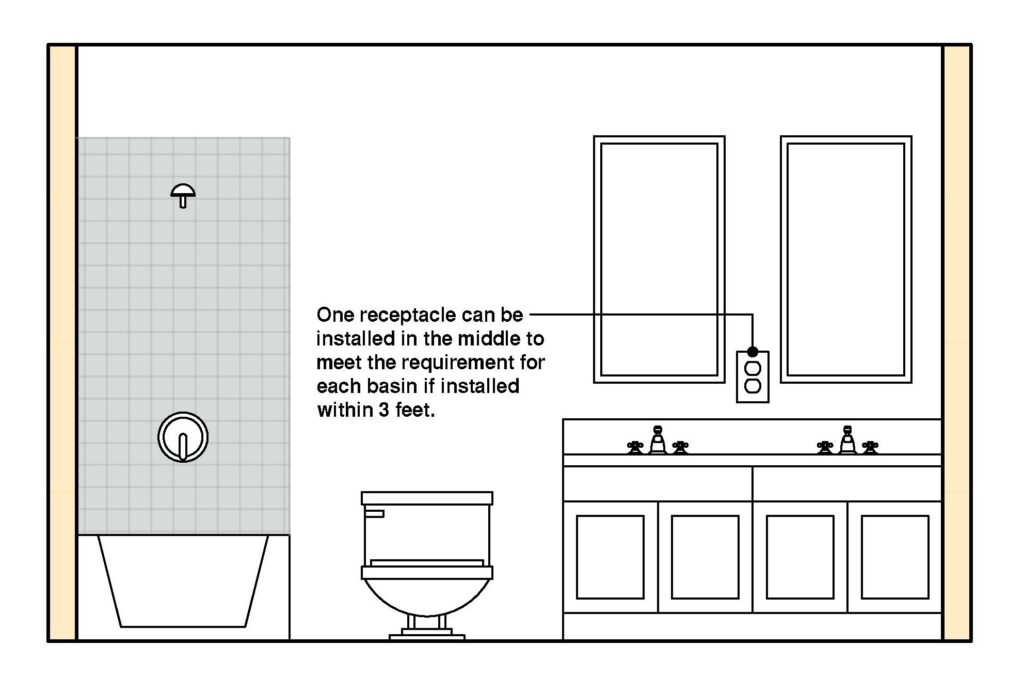When it comes to choosing the perfect bathroom vanity, one of the most important factors to consider is the height. After all, you want to make sure that your vanity is comfortable and functional for everyday use. This is where the standard bathroom vanity height comes into play. The standard height for a bathroom vanity is typically between 32 inches and 36 inches. This measurement is from the floor to the top of the vanity countertop. While this may seem like a wide range, it is the most common height used in residential bathrooms. However, it's important to note that this height may not work for everyone, and there are other codes and regulations to consider as well. Standard Bathroom Vanity Height
The bathroom vanity height code is a set of guidelines and regulations put in place to ensure that the vanity is installed at a safe and comfortable height for all users. These codes can vary depending on the location and type of building, so it's important to do your research before installing a bathroom vanity. In general, the bathroom vanity height code follows the standard height range of 32 inches to 36 inches. However, there may be specific requirements for different types of buildings, such as residential or commercial. It's always best to consult with a professional to ensure you are following the correct codes for your specific project. Bathroom Vanity Height Code
The Americans with Disabilities Act (ADA) has specific guidelines for bathroom vanity height in order to provide accessibility for individuals with disabilities. According to the ADA, the bathroom vanity height should be no higher than 34 inches and no lower than 29 inches. This allows for individuals in wheelchairs to comfortably use the vanity. Additionally, the ADA requires that the vanity has an open space underneath measuring at least 27 inches in height, 30 inches in width, and 19 inches in depth. This allows for a wheelchair to fit under the vanity for easier access. ADA Bathroom Vanity Height Code
Building codes are put in place to ensure the safety and functionality of a structure. This includes regulations for the height of a bathroom vanity. While building codes may vary depending on the location, most follow the standard height range of 32 inches to 36 inches. However, building codes may also have specific requirements for clearance space around the vanity, as well as the height of the mirror above the vanity. It's important to consult with a professional or research the building codes in your area before installing a bathroom vanity. Building Code Bathroom Vanity Height
For residential buildings, the bathroom vanity height code may follow the standard height range of 32 inches to 36 inches. However, depending on the location, there may be specific regulations for residential buildings. For example, some states may require a minimum clearance space of 21 inches in front of the vanity for wheelchair accessibility. It's also important to consider the needs and preferences of the individuals using the bathroom. For taller individuals, a higher vanity may be more comfortable, while for shorter individuals, a lower vanity may be easier to use. Residential Bathroom Vanity Height Code
Commercial buildings, such as offices, restaurants, and hotels, may have different regulations for bathroom vanity height compared to residential buildings. This is because these buildings may have a higher number of visitors and need to accommodate a wider range of individuals. In general, the commercial bathroom vanity height code follows the standard height range of 32 inches to 36 inches. However, there may be additional requirements for clearance space and accessibility. It's important to research the specific codes for your project to ensure compliance. Commercial Bathroom Vanity Height Code
The universal bathroom vanity height code is an effort to make bathrooms accessible for individuals of all ages and abilities. This code usually follows the guidelines set by the ADA, with a maximum height of 34 inches and a minimum height of 29 inches. In addition, the vanity should have a clearance space of at least 27 inches in height, 30 inches in width, and 19 inches in depth. This allows for individuals of different heights and abilities to comfortably use the vanity. Universal Bathroom Vanity Height Code
The minimum bathroom vanity height code is the lowest height that is acceptable for a bathroom vanity. In most cases, this height is 29 inches, which is the minimum requirement set by the ADA. However, it's important to check with local building codes as they may have different minimum height requirements. Keep in mind that the minimum height may not be suitable for all individuals, and it's always best to consider the specific needs and preferences of those using the bathroom. Minimum Bathroom Vanity Height Code
While the standard bathroom vanity height falls within a range of 32 inches to 36 inches, the maximum bathroom vanity height code is typically 36 inches. This is because a higher vanity may not be accessible for all individuals, especially those in wheelchairs. However, some building codes may allow for a maximum height of up to 40 inches for commercial buildings. It's important to research the specific codes in your area before determining the maximum height for your bathroom vanity. Maximum Bathroom Vanity Height Code
In addition to the height regulations, there may be other code requirements for bathroom vanity height that you need to consider. These may include the clearance space around the vanity, the height of the mirror above the vanity, and the location of electrical outlets. It's important to research and understand all the code requirements for your specific project to ensure your bathroom vanity is installed correctly and safely. Code Requirements for Bathroom Vanity Height
The Importance of Proper Bathroom Vanity Height in House Design

Why is Bathroom Vanity Height Important?
 When it comes to designing a bathroom, one of the most important elements to consider is the
bathroom vanity height
. This is the measurement from the floor to the top of the vanity, and it can greatly impact the overall look and functionality of the space. Whether you are remodeling your existing bathroom or designing a new one, it is crucial to pay attention to the
proper bathroom vanity height
for a functional and aesthetically pleasing design.
When it comes to designing a bathroom, one of the most important elements to consider is the
bathroom vanity height
. This is the measurement from the floor to the top of the vanity, and it can greatly impact the overall look and functionality of the space. Whether you are remodeling your existing bathroom or designing a new one, it is crucial to pay attention to the
proper bathroom vanity height
for a functional and aesthetically pleasing design.
Factors to Consider for Bathroom Vanity Height
 There are several factors to consider when determining the
ideal bathroom vanity height
for your space. The first is the height of the people who will be using the bathroom. For taller individuals, a higher vanity will be more comfortable, while shorter individuals may prefer a lower vanity. It is important to find a balance that caters to the majority of people who will be using the bathroom.
Another factor to consider is the type of sink and countertop you will be using. If you have a vessel sink or a thick countertop, you may need to adjust the vanity height accordingly to ensure proper functionality. Additionally, the type of faucet you choose can also affect the vanity height, as some faucets require more clearance space than others.
There are several factors to consider when determining the
ideal bathroom vanity height
for your space. The first is the height of the people who will be using the bathroom. For taller individuals, a higher vanity will be more comfortable, while shorter individuals may prefer a lower vanity. It is important to find a balance that caters to the majority of people who will be using the bathroom.
Another factor to consider is the type of sink and countertop you will be using. If you have a vessel sink or a thick countertop, you may need to adjust the vanity height accordingly to ensure proper functionality. Additionally, the type of faucet you choose can also affect the vanity height, as some faucets require more clearance space than others.
Benefits of Proper Bathroom Vanity Height
 Having the
right bathroom vanity height
can offer several benefits to your overall bathroom design. Firstly, it can improve the overall functionality of the space. Having a vanity that is too high or too low can make everyday tasks, such as brushing your teeth or washing your face, uncomfortable and inconvenient. A proper vanity height can make these tasks easier and more enjoyable.
In addition to functionality,
proper bathroom vanity height
can also enhance the overall aesthetics of your bathroom. It can create a sense of balance and harmony in the space, making it more visually appealing. This is especially important if you are trying to create a cohesive design throughout your entire house.
Having the
right bathroom vanity height
can offer several benefits to your overall bathroom design. Firstly, it can improve the overall functionality of the space. Having a vanity that is too high or too low can make everyday tasks, such as brushing your teeth or washing your face, uncomfortable and inconvenient. A proper vanity height can make these tasks easier and more enjoyable.
In addition to functionality,
proper bathroom vanity height
can also enhance the overall aesthetics of your bathroom. It can create a sense of balance and harmony in the space, making it more visually appealing. This is especially important if you are trying to create a cohesive design throughout your entire house.
The Standard Bathroom Vanity Height
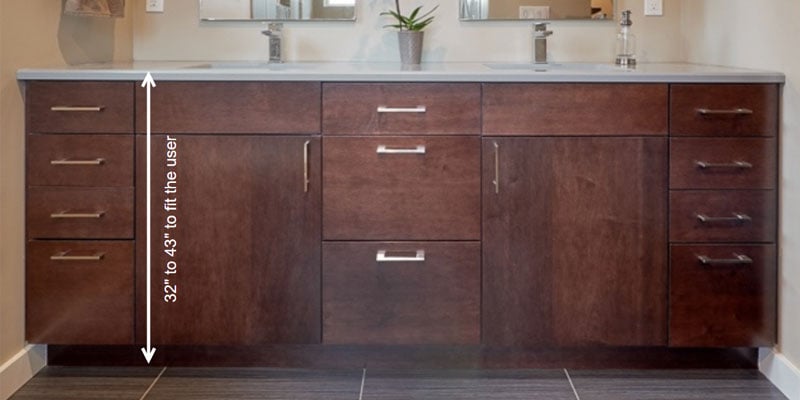 While there is no one-size-fits-all standard for
bathroom vanity height
, the general rule of thumb is to have the top of the vanity sit at around 32-34 inches off the ground. This is a comfortable height for most individuals and works well with most sink and countertop combinations. However, it is important to take into consideration the factors mentioned above and adjust accordingly if needed.
In conclusion,
bathroom vanity height
is a crucial element to consider in house design. It not only affects the functionality of the space but also plays a significant role in the overall aesthetics. By taking into account the factors mentioned and finding a balance that works for your space, you can create a beautiful and functional bathroom design that meets your needs and preferences.
While there is no one-size-fits-all standard for
bathroom vanity height
, the general rule of thumb is to have the top of the vanity sit at around 32-34 inches off the ground. This is a comfortable height for most individuals and works well with most sink and countertop combinations. However, it is important to take into consideration the factors mentioned above and adjust accordingly if needed.
In conclusion,
bathroom vanity height
is a crucial element to consider in house design. It not only affects the functionality of the space but also plays a significant role in the overall aesthetics. By taking into account the factors mentioned and finding a balance that works for your space, you can create a beautiful and functional bathroom design that meets your needs and preferences.
